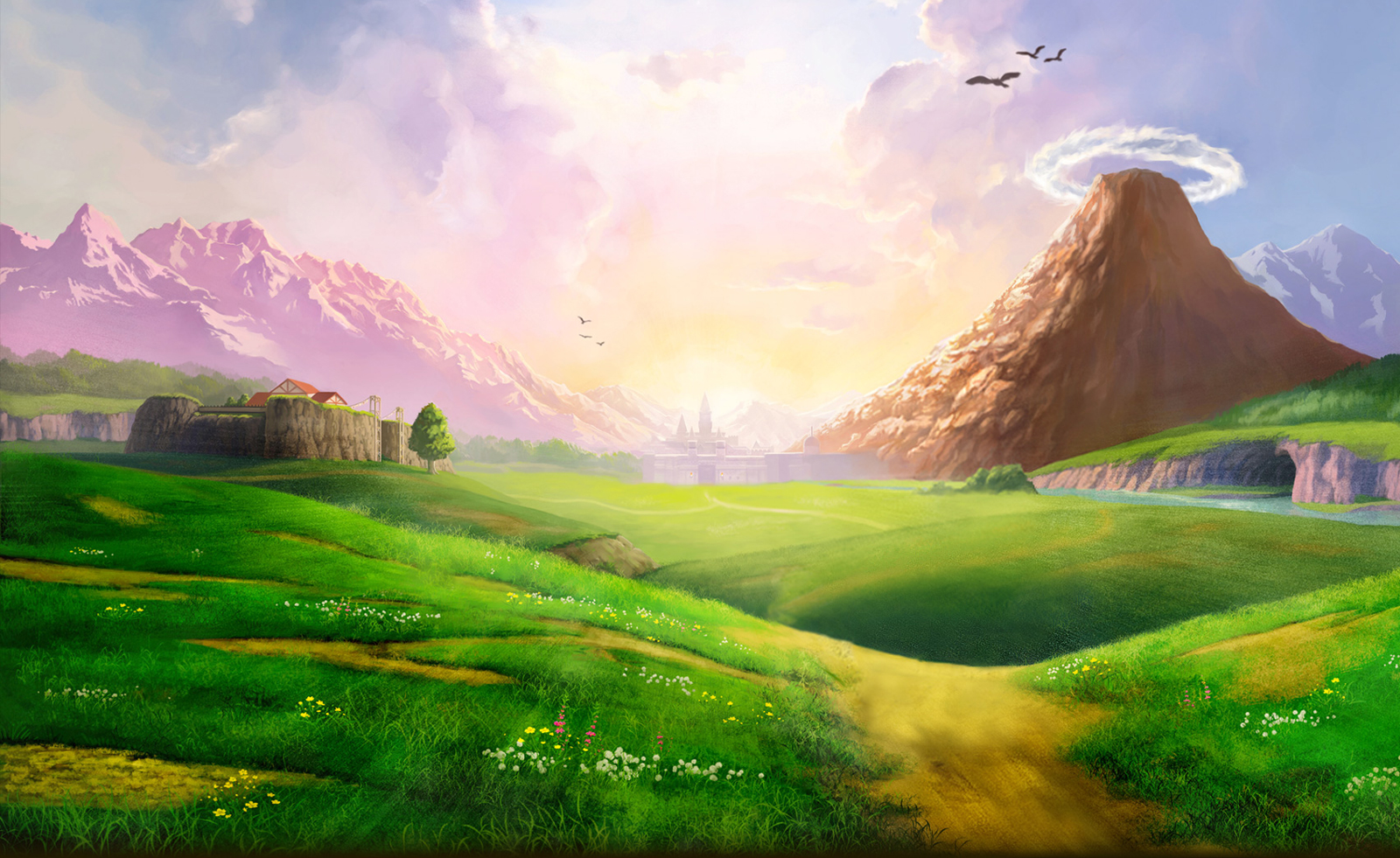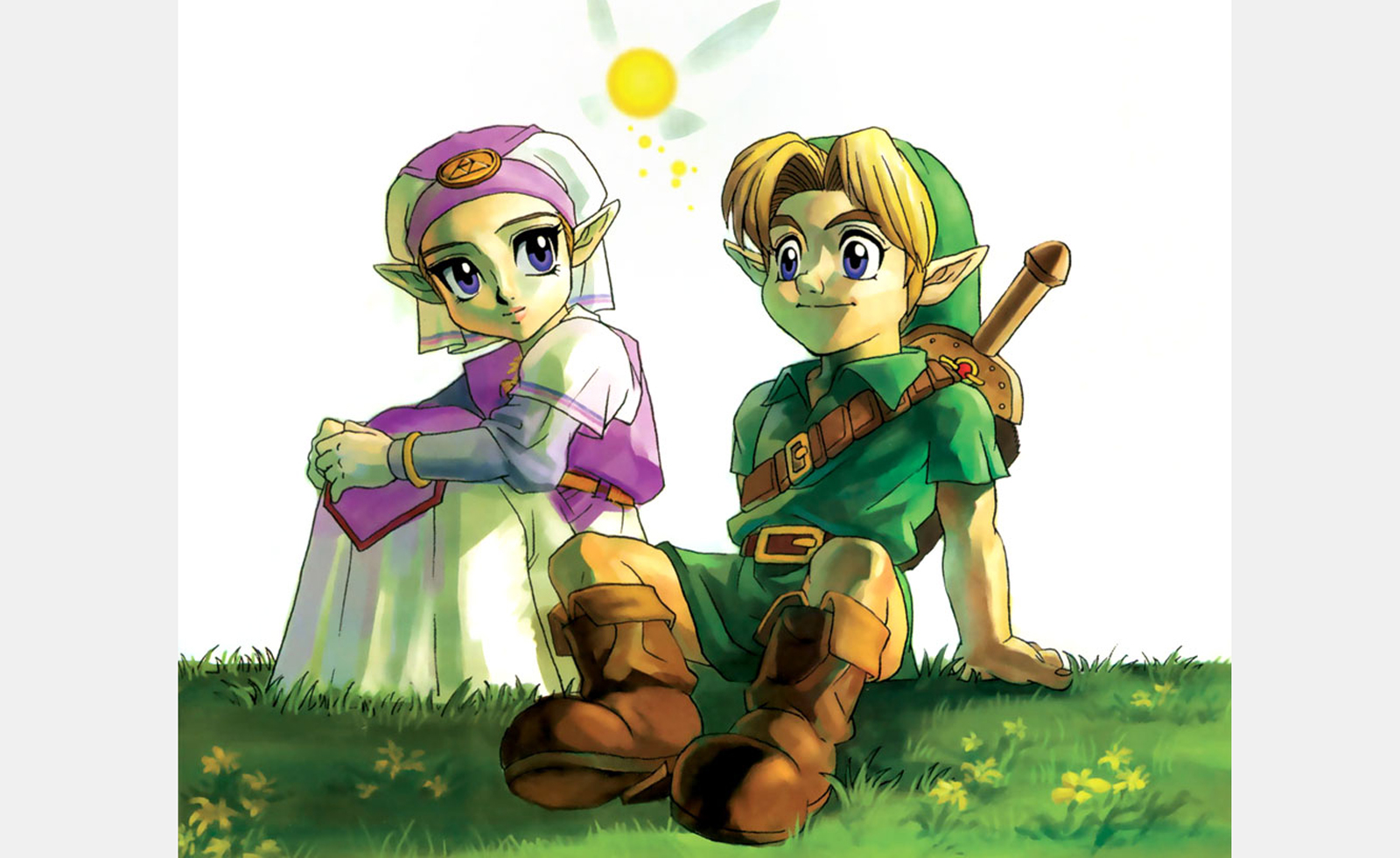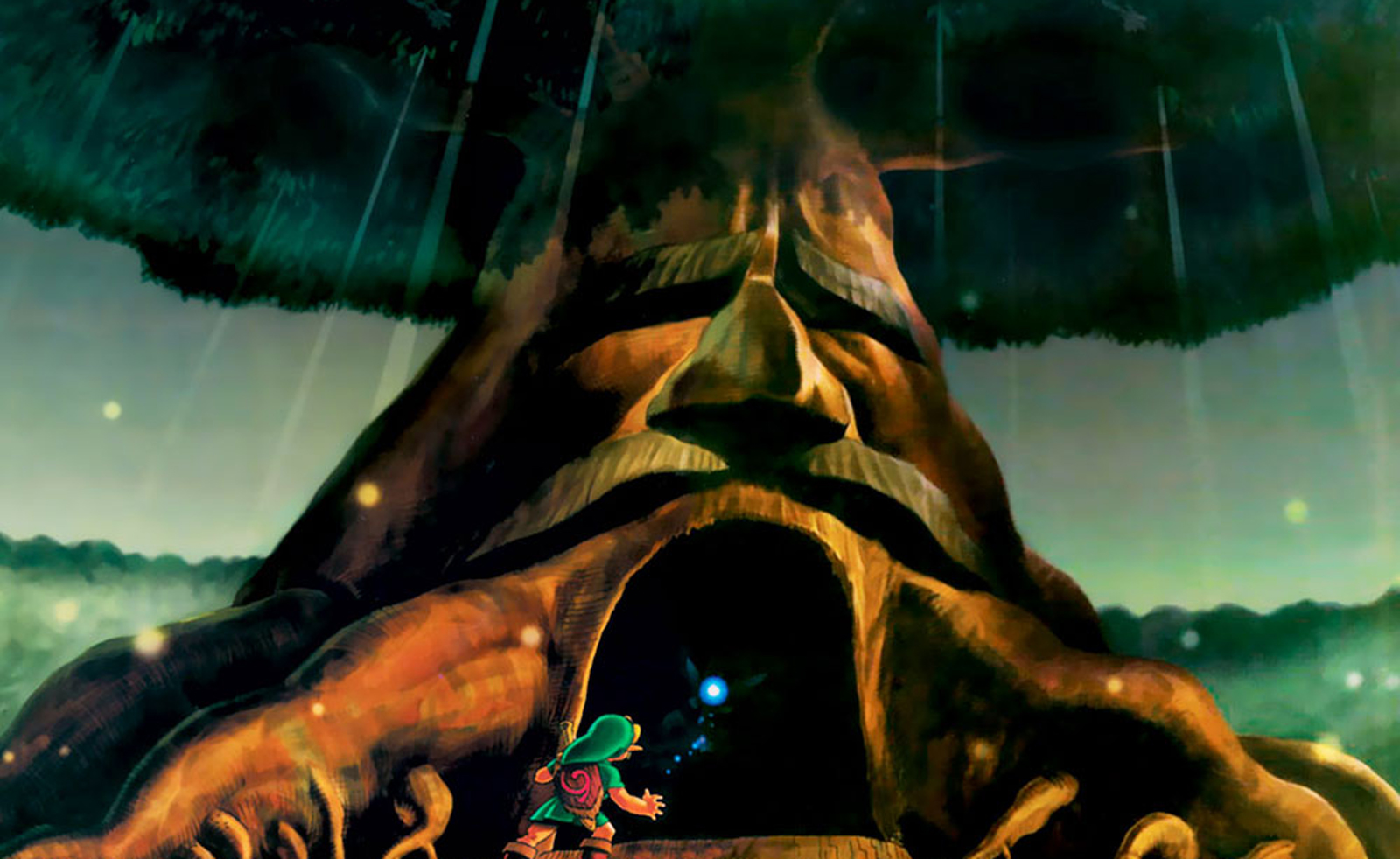
Just like a mesmerised Luke Skywalker looking up at that dual sunset in Star Wars, or Peter O’Toole’s awe-struck TE Lawrence gazing at the never-ending, red desert glow of Jordan’s Wadi Rum valley in Lawrence of Arabia, the first time that child hero Link explores Hyrule Field to kick-start his adventure in 1998’s Legend of Zelda: Ocarina of Time is a revelatory experience.
In the previous Zelda games, the limitations of 2D technology meant Hyrule Field was far too blocky and had grass that resembled green Lego bricks. However, the roleplaying series’ leap from 2D to 3D via the extra processing power of the Nintendo 64 console meant Hyrule Field suddenly felt like a living, breathing place, where you could spontaneously stumble upon grottos filled with hidden treasure, talk to intrepid joggers, and receive floating hearts from scantily clad fairies who lived inside kaleidoscopic caves.
Galloping on your trusted horse, Epona, while gazing at familiar sights on the horizon like the prestigious Hyrule Castle and the far humbler Lon Lon Ranch was a strangely soothing experience; something so nostalgic that 1990s kids swore they could smell the sweet morning dew coming off the grass and even feel the oppressive heat exiting the treacherous volcano over on Death Mountain. A lot like those scenes in the two aforementioned films, entering Hyrule Field in Ocarina of Time carried an immediate sense of magic and feeling you were being immersed in an epic pathway directly connecting you to a new world of infinite possibilities.

In our contemporary era of 4K graphics and Oculus Rift headsets, the Hyrule Field of Ocarina, which was released 25 years ago on 23 November in North America and 11 December in Europe, is far smaller and more simple than you might remember it. Its setting has also been imitated – and furthered – by everything from The Witcher 3 to Skyrim. Yet because of Nintendo’s charming, fairytale-esque design, which offers up a delicate and carefully weighted combination of darkness and light, the emotional response it triggers hasn’t dampened at all, and you’ll still feel a rush all these years later.
The game’s environments are still so perfectly balanced. When Link is a child, the story carries a jolly sensibility: the heartening soundtrack (courtesy of Koji Kondo) is full of beaming ancient chimes, while the land of Hyrule is the perfect mix of bantering, kooky shops owned by local eccentrics, and touching yet slightly creepy imagery (such as the philosophical, talking Deku Tree and the forgotten soldier taking his last breaths in a village alleyway). Yet when Link returns as an adult, the landscape is hopelessly barren.
Nosferatu-esque, evil-grinning zombies (the ReDead) have invaded the previously euphoric Castle Town and replaced all the locals, while the warmth of the music is lost into the abyss via bone-chilling synths that make you question whether your game cartridge might actually be haunted. Characters that were once full of life become tortured ghosts in this new world (including a deceased Undertaker you complete side quests for), too, and this cruel passage of time arguably helped a whole generation of millennials face up to their mortality more clearly than any of their school books exploring the concept of death.

Whereas the dungeons for child Link had cute sidekicks, silly locations (including a monster’s stomach) and reassuringly simple puzzles, the puzzle solutions in the later part of the game are so complex (particularly inside the Water Temple) that it often feels like your brain has been replaced with a Rubik’s Cube. The later environments pack more melancholy too. The dolphin-like Zora creatures are no longer swimming through the sumptuous blue colours of Hyrule Lake, which has completely frozen over into a grey sludge and pushed its natives out. It’s about how the only thing you can truly rely on in life is a constant changing of the tides.
It’s all these contrasts and juxtapositions that make Ocarina of Time’s design so timeless and give the player the feeling of genuine growth: not just in the killer skills you acquire but also in being able to stand tall despite all the emotional hardships this game puts Link through. We now know that Nintendo is working on a live-action Zelda film and, if it’s to buck the trend of truly poor Hollywood game adaptations, it will need to nail the tightrope between life and death, which is such a central tenet of Ocarina of Time’s emotional language.

Phaidon’s survey of the art of video games evokes wonder and nostalgia
At one point in Ocarina, Princess Zelda (who is in heavy disguise) tells Link: ‘Time passes, people move. Like a river’s flow, it never ends. A childish mind will turn to noble ambition. Young love will become deep affection. The clear water’s surface reflects growth. Now listen to the Serenade of water to reflect upon yourself.’ This speech reflects how Ocarina of Time is all about coming to grips with being a part of an imperfect world, where even good people will disappear, and appreciating the strange beauty that comes with growing older and embracing a state of decay.
It’s a message that tells you everything you need to know about the enduring power of this legendary game and how its design continues to inspire genuine self-reflection among its players, looking up at a sunset in Hyrule Field and wishing this rich landscape could replace the weird world outside of their own windows. Ocarina of Time is there, whenever you want to feel like a little kid again.







